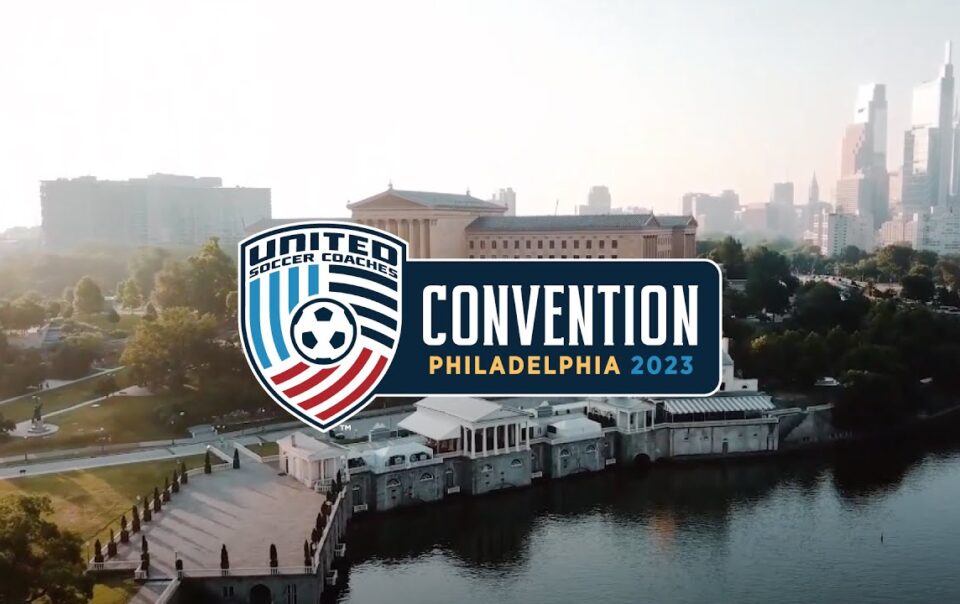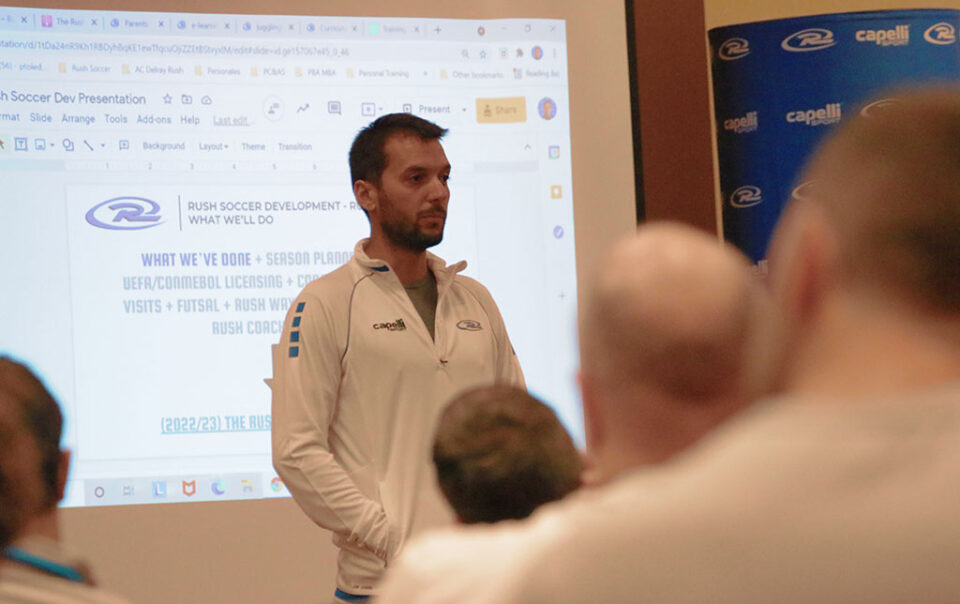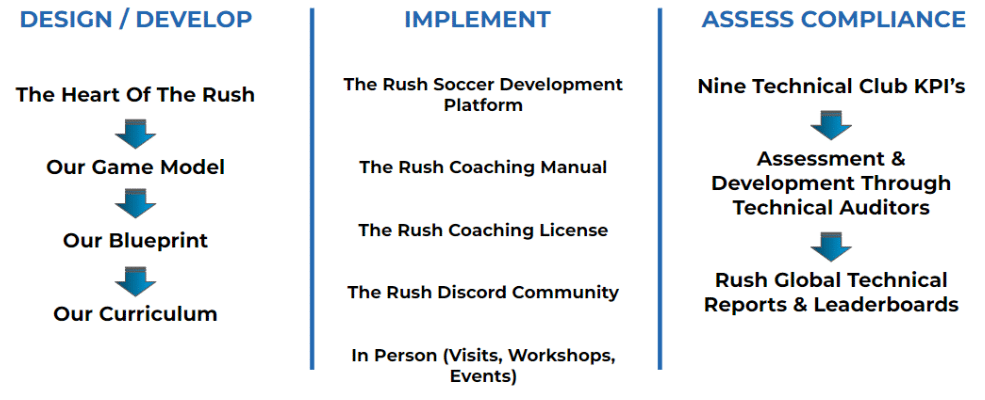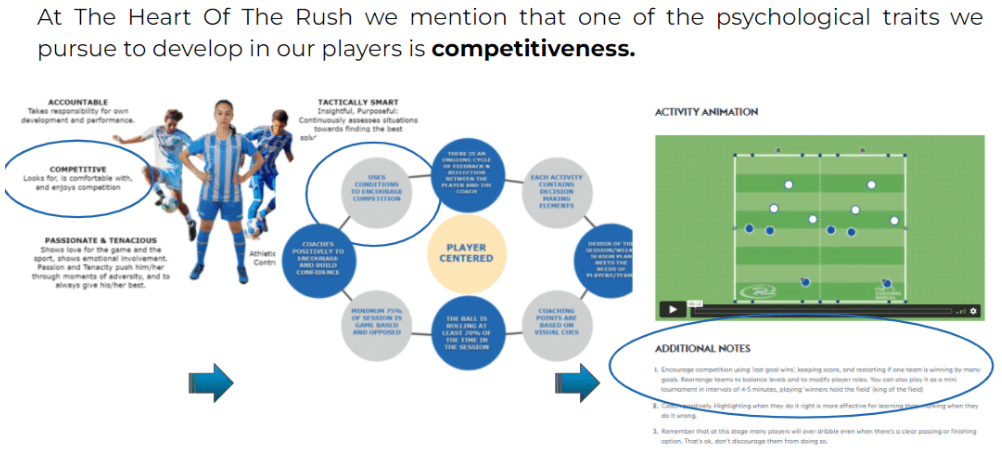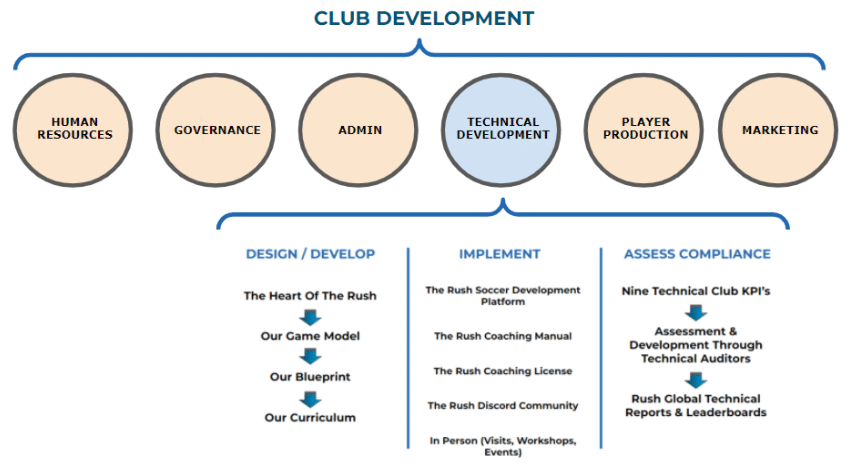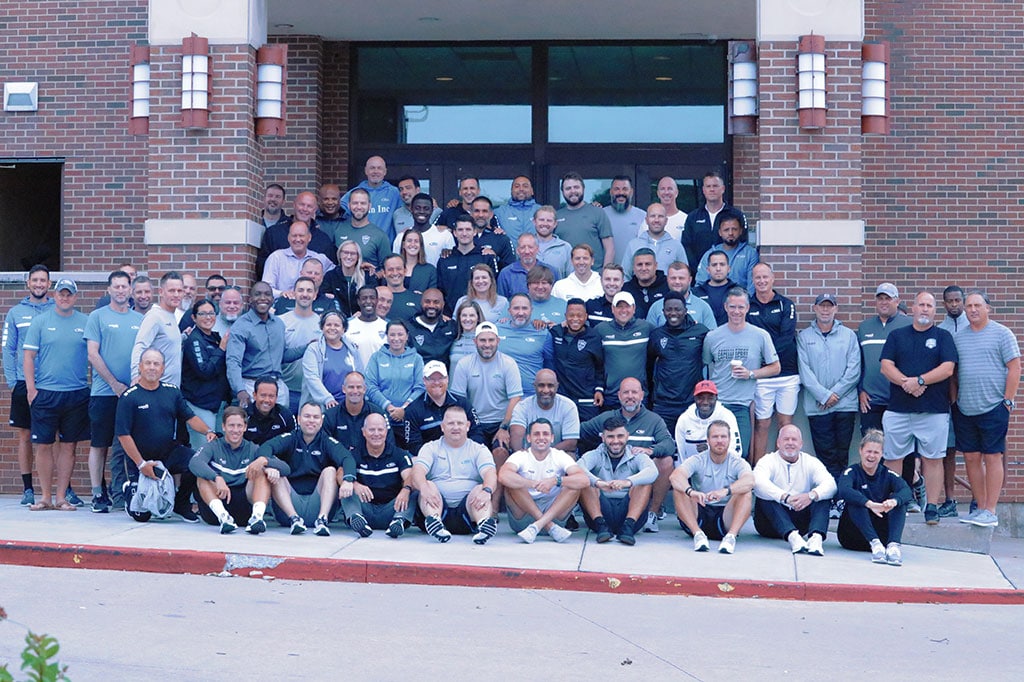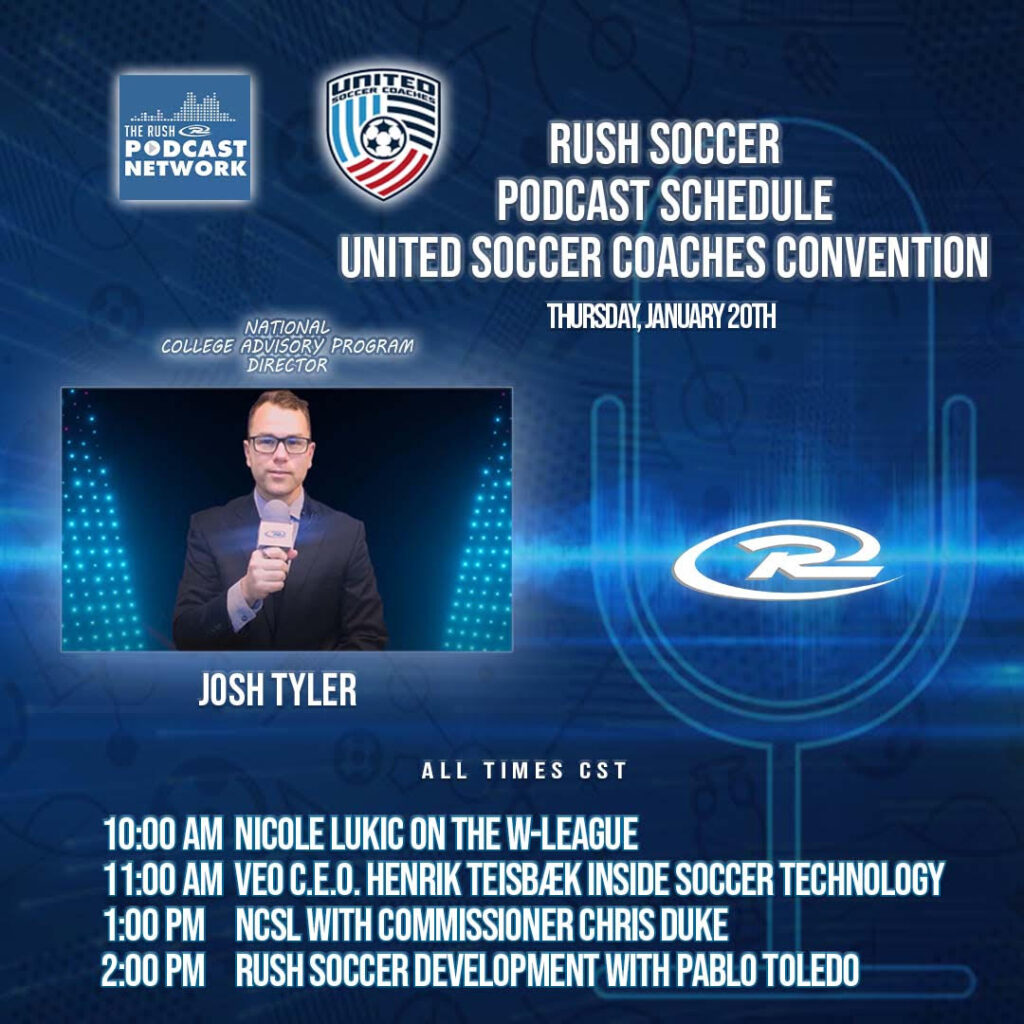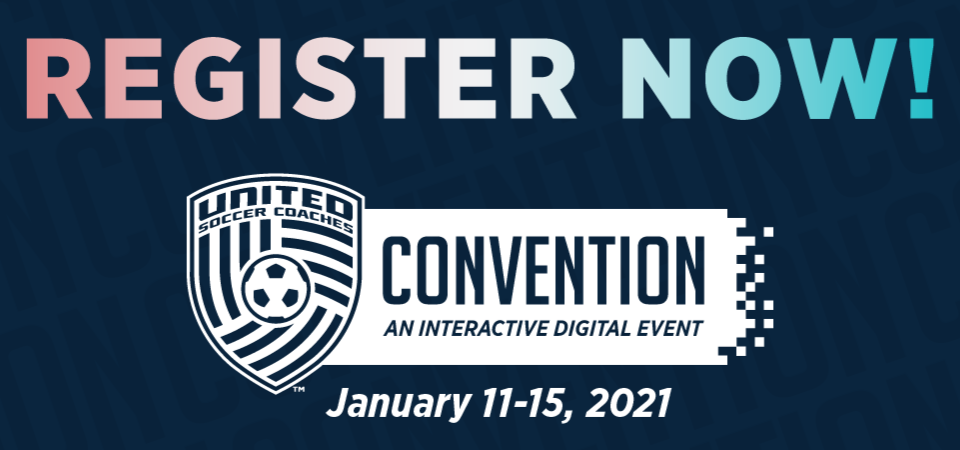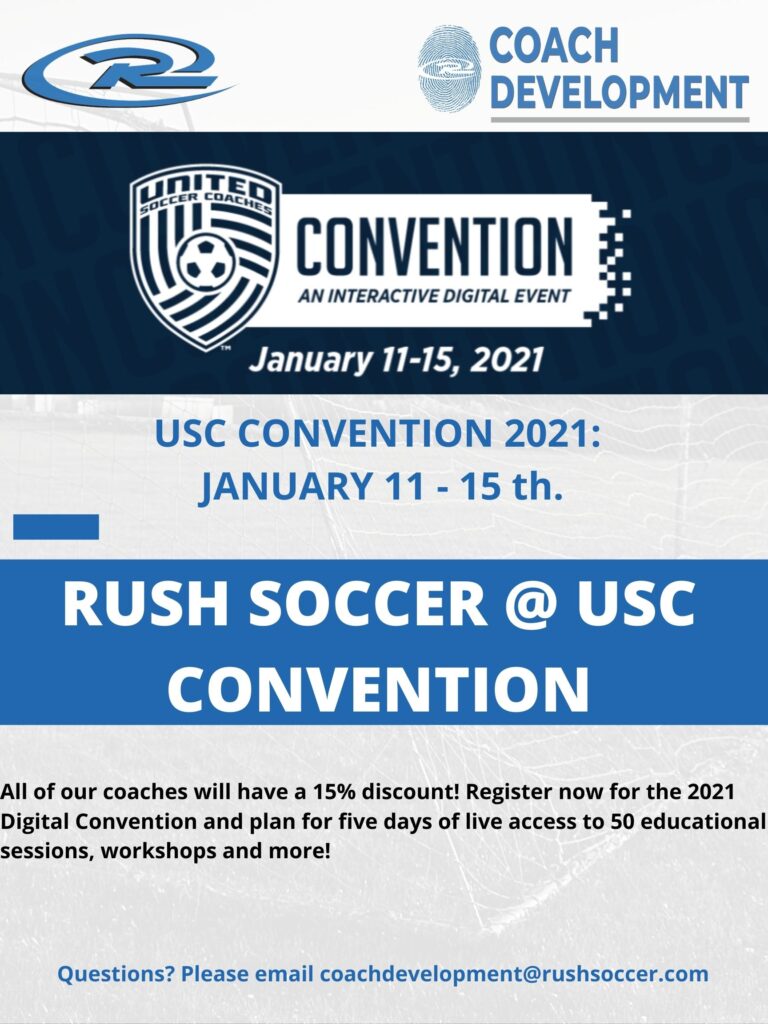This article was written by Pablo Toledo, Rush’s Sporting Project Director.
When I was proudly invited to present at the USC Convention 2022, the first thing I told the audience was that I had no formula as far as how to design and develop a successful sporting project for their clubs, and that all I was going to do was share what I did and what I’m still doing for my club, Rush Soccer, which has very particular characteristics, given our size, geographical distribution, and type of club that integrates our network. Solutions are always tailored to the specific problem that you face. There are concepts and methods but hardly ever we get to apply any of these exactly by the book. No secret sauces in life, nor in coaching, I guess.
One year later, framed by the 2023 United Soccer Coaches Convention, I’m meeting with the leaders of over 50 Rush clubs and I can tell you that my feelings are of pride and enthusiasm as I insinuate to the audience that ‘today, you won’t hear anything from me that you haven’t heard before, this is more of an update about the progress that we’ve made in our project and the progress that we’ll make in 2023‘
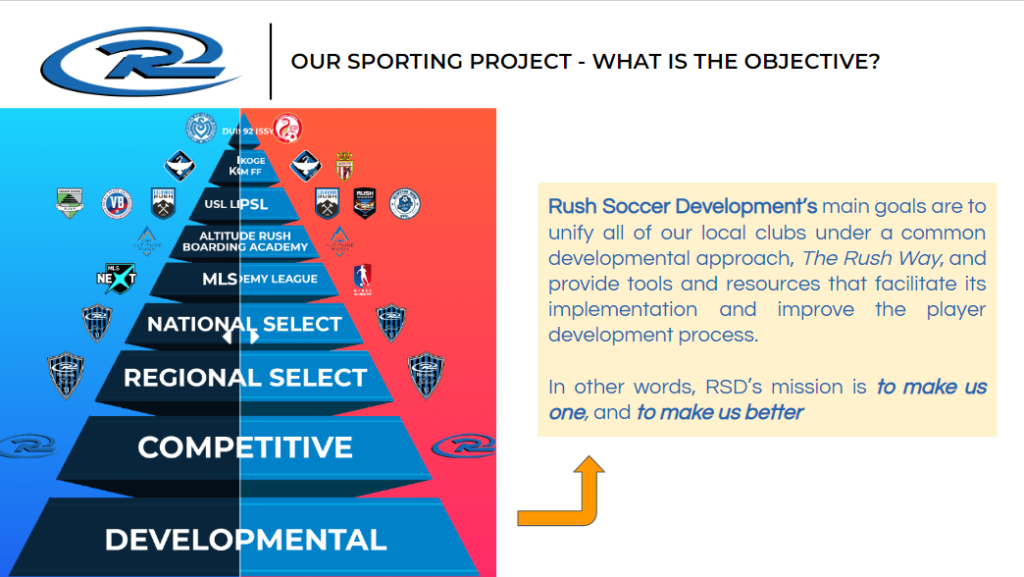
The objective of my department and the sporting project we lead can be simply summarized as ‘unite and improve’. Unite our clubs under the same culture and methodological approach, and improve the way we develop players, and to do that the first step, as obvious as it sounds, is to be really sure of who you are and what you want. You need to find the essence of your club, the non negotiables, and then do the very hard exercise of not only formalizing it in a fancy document or a statement on a website, but to ensure these instrumental aspects of your culture and approach are present in everything that you do, and that implies the way we behave, the way we play, what we teach, how we teach it, etc.
Let me give you an example: In our club, we consider competitiveness a key characteristic of our organization. We like to compete, we want to compete, and we want to nurture that competitiveness in our players. Therefore, when we designed our curriculum and/or we run coaching education courses, we mandate our coaches to make every single training activity a competition in which (per definition) has to be a way of winning and a way of losing.
This might look like a simple detail, but a culture is actually not a lot more than the sum of hundreds of little details that are shared, valued, and respected by a group of people, so it matters to us.

Defining and sharing these layers in our culture and our player development approach is what I’ve been calling ‘Stage 1‘ of the project. Stage 2 was about finding ways to implement them in the 100+ Rush clubs in the world. This is an equally challenging stage that resulted in the creation of several services that we are providing our clubs (Mental Health, Video Analysis, among others) and the development of tools to learn and implement this culture and player development approach locally.
Among these last, we managed to develop a tool that we call Rush Coaching Manual (a white label product of The Coaching Manual) in which we designed every session and activity of our curriculum in detail, gave access to every Rush coach in the world, and developed a feature that allows coaches and clubs to create fully Rush customized season plans for their teams.
Another tool was our Programa Train @ Home, which supplements on the field training with follow along video sessions in ball skills, passing, receiving, and fitness, among others, in pursuance of increasing our players weekly hours on the ball.
Now here is where you could think “easy, I get Coaching Manual for everybody in my club and a Techne subscription for my players and problem solved, I caught up already” but you haven’t. All you did was provide a service, but where’s the imprint from your club? Techne teaches Techne Way, not The Rush Way. We care about integrating each of these programs with our culture and approach in specific ways, so for example when including in Train @ Home a certain skill for any age group / ability level, we explained it and demonstrated it in the same way we added it to the training session that coaches are reading and delivering to those groups, so it’s aligned not only in topics but also in language.
A third tool that is of vital importance for our organization is what we call RSD University This is an online learning platform in which, apart from other courses we provide for players, parents, and coaches, we developed our own coaching education certification pathway, which we made mandatory for our coaching staff globally.
This was a foundational step for our club as it related to what we consider Stage 3 of the project, that is about finding ways to Assess and Develop Our Clubs & Coaches. In other words, knowing what you want and developing the layers of it and even the tools to implement it loses it’s purpose if you don’t have a system with checks and balances, in which you can assess what’s done right and wrong by your clubs and assist towards progressing, as well as highlighting the top performers. This might sound obvious but when we stated the objective of the project we phrased Unite and Improve, not do and use whatever you want and hopefully improve.
This is the stage where we are now, Assessing & Developing, in which as I mentioned before the RSD University marks the first step of progress as we have the capacity and are already tracking the percentages of Rush Way certifications in each of our clubs, with the goal and requisite of reaching 75% of Rush Way LII certifications and sustaining that minimal in each club at all times.

The statuses of this request are currently tracked and soon to be publicly posted to our network, ranking the clubs per its performance and giving awards and penalties based on it. This is the path for progress for us and the type of setting and indicators we defined for other areas that affect player development and cultural representation, as well as facilitate the long term measurement of player production.

Several of our current projects relate to this development of mechanisms to assess and develop our clubs, including the formation of a pool of ‘Club Technical Directors’, the figure that we use to refer to a team of highly experienced professionals with the capacity to conduct purposeful visits to our clubs, run assessments, and correlate these last with developmental periods.
To build a global, real-time dashboard in which we transparently reflect the performances of our clubs in these areas is the pinnacle of the project.
This, at Rush Soccer, is the engine for progress.
Give me one more year coach, and I’ll give you another update. Thanks for reading.


